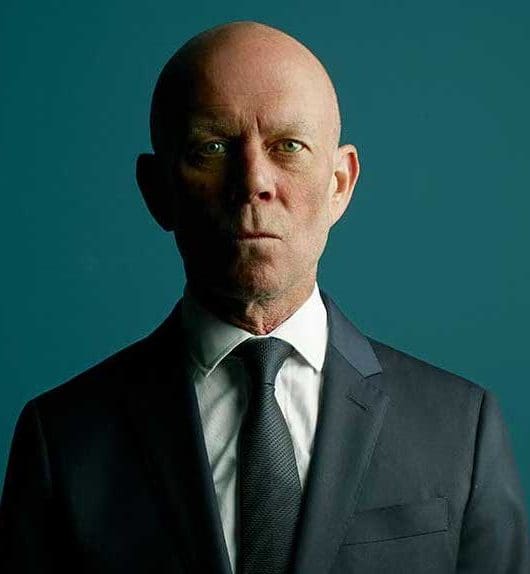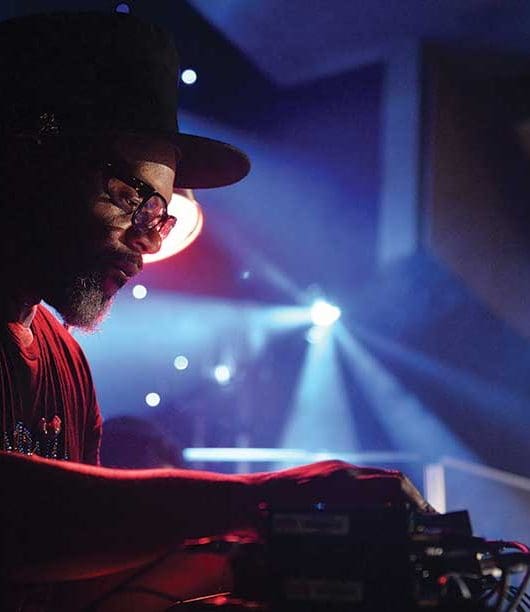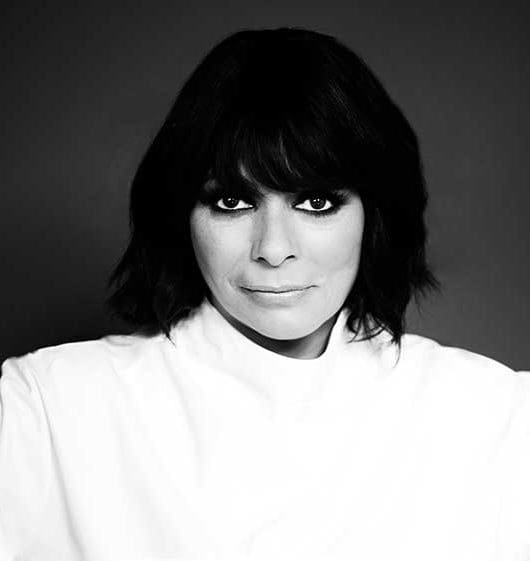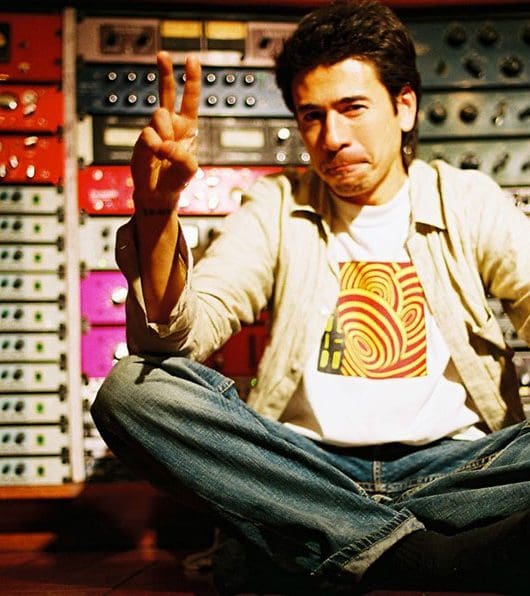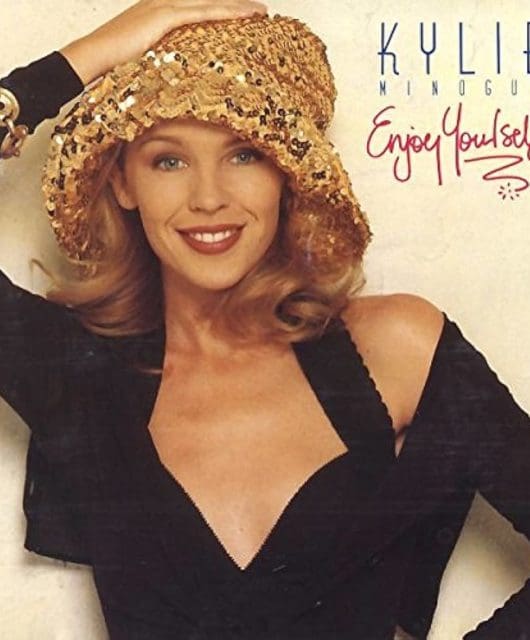Classic Album: Debut – Björk
By Classic Pop | August 3, 2017
Following the break-up of Icelandic indie outfit The Sugarcubes, Björk released THE 1993 masterpiece, Debut, the record that was to establish her as a true pop maverick
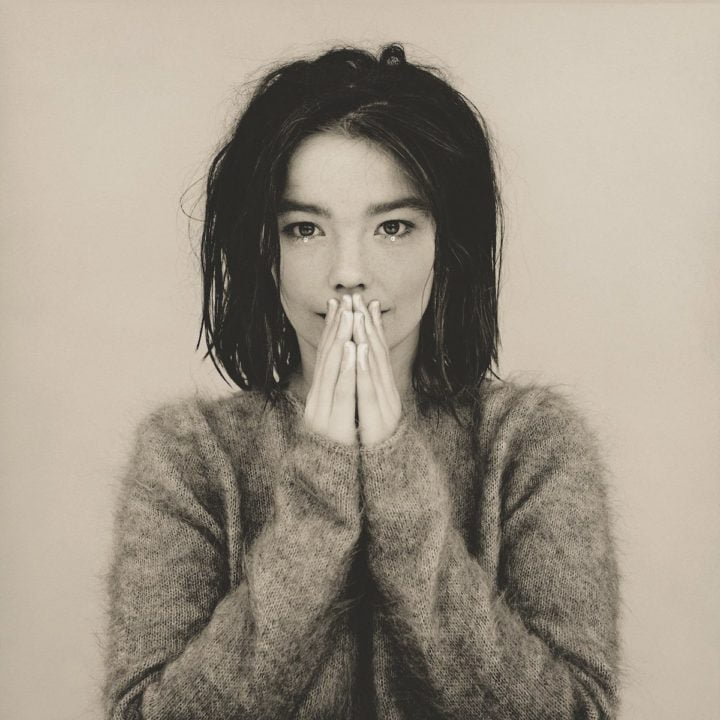
Having emerged as a child star in her native Iceland with an eponymous album at the age of 11, Björk had already amassed 16 years’ experience in the music business by the time she released her solo breakthrough, Debut, in July 1993. The singer spent her formative years as part of Reykjavik art collective Bad Taste and in punk bands Spit & Snot and Kukl, Björk achieved international success with The Sugarcubes.
While Debut’s otherworldly eclecticism is light years away from The Sugarcubes’ output, Björk’s transition from feisty frontwoman to electro enchantress had been years in the making.
“When The Sugarcubes started to get attention abroad and I got the opportunity to travel in 1988, I was so excited to see live bands,” Björk says. “When I got to the UK and we had a day off between touring, I would go and try to see as many concerts as I could. I was so disappointed because it was so stagnant, nobody was taking any risks. So, I started going to clubs in 1988 and I just became obsessed with them.
“I had to go to lots of them, but when I found the right ones, they had atmosphere and miracles happened.”
Having visited Manchester to collaborate with dance pioneers 808 State, she witnessed first-hand the city’s nightlife, throwing herself into its vibrant hedonism. Her relationship with DJ Dominic Thrupp was her connection to London’s clubland, enabling her to build a network of like-minded creatives with whom she planned to collaborate to bring her ideas to life. Though she had originally planned to work with different producers depending on the style of music she was working on at the time, an introduction to Nellee Hooper was instrumental in bringing Debut to fruition.
“A friend of mine suggested we work together and I was a bit suspicious to begin with,” Björk explained to The Face magazine in 1993. “I had to ask what he had done. I like Soul II Soul, but mainly when they’re on the radio. Myself, I like to go out and dance to hardcore or industrial techno, hard beats with an experimental edge. I thought Nellee was too ‘good taste’ for my liking. But then I met him, got to know him, got to hear about his fabulous ideas and it ended up with him producing the whole album.
“With me and Nellee it was very intimate – even though I wrote all the songs. It’s hard for me to take full credit for them because we were so dependent on each other. We were lost in the music!”
With their union drawing inspiration from a far-flung list of locations from Bristol to Bombay, Iceland to Ibiza, their creative collision resulted in Björk’s every musical aspiration being realised, however outlandish.
Everyone was delighted to be allowed to sneak out of their usual category and try something different. The emphasis was on the songs themselves and whatever was needed we used.”
“I wanted the album to be pop music that everybody can listen to. I think not sticking to any particular musical style makes the album real. Life isn’t always the same… unexpected things happen. That’s this record.” – Björk
Despite Debut’s diverse range of influences, Björk’s honest lyrics and impassioned vocal delivery gave the album a sense of cohesion and ensured the songs were relatable to listeners. However avant-garde the sonic soundscapes, the juxtaposition of fusing them to real situations made them a direct line to her fans. As someone who detested musical snobbery, Björk was adamant that her music was accessible to all.
“I wanted the album to be pop music that everybody can listen to,” she said. “I think not sticking to any particular musical style makes the album real. Life isn’t always the same. You don’t live in the same style from day to day, unexpected things happen that are beyond your control. That’s this record. One song is about the mood you’re in walking to the corner shop, another is about being drunk and out of it on drugs in a club, and the next one is about feeling romantic and making love.”
The songs
1. Human Behaviour
Björk’s otherworldliness was affirmed with Debut’s first single, a wry observation on mankind from the point of view of an outsider, in this case an animal. Written in 1988 while she was still a member of The Sugarcubes, it was inspired by Björk’s childhood, her admiration for David Attenborough and feelings of not fitting in.
“At the time I wrote it I was referring to my childhood and probably talking about how I felt more comfortable on my own walking outside singing and stuff than hanging out with humans,” she said. “I experienced harmony with kids, the mountains and the ocean surrounding Reykjavik and animals I guess, but found grown-ups rather chaotic and nonsensical.”
2. Crying
The album’s first foray into Björk’s clubbier side, Crying juxtaposes a thumping dance beat and Italo House-inspired piano riff with lyrics that reveal it to be a paean to Björk’s despair of being separated from her boyfriend at the time, with her feelings of loneliness exacerbated by feeling small and alone in a bustling, big city.
“Crying ’cause I need you/crying I can feel you/crying ’cause I need you/crying ’cause I care,” she sings, her anguish at odds with the song’s seemingly uplifting style.
3. Venus As A Boy
One of the album’s most sensual moments, Venus As A Boy is a slinky, jazz-inflected ode to the tender gentility of her boyfriend. A strong Bollywood influence, courtesy of contributions from Talvin Singh and an Indian film studio orchestra, warmly embraces Björk’s coquettish vocal, which laments a boy (widely believed to be her boyfriend at the time, Dominic Thrupp) who sees “beauty in everything”. The final song written for Debut, Venus As A Boy was one of Björk’s personal favourite tracks and the album’s second single.
4. There’s More To Life Than This
It’s back to the club (or the club toilets more precisely) for There’s More To Life Than This, a thumping dance anthem recorded live in the toilets of London’s Milk Bar, with superb production effortlessly veering from the club dancefloor to the toilet cubicle from where a tipsy-sounding Björk confides in her listeners. Capturing the joyful exuberance and spontaneity of the rave days, Björk decides to leave the party, grab a ghetto blaster and sneak off to an island to party in typical eccentric fashion.
5. Like Someone In Love
One of Björk’s initial influences when formulating the sound of Debut was jazz and her love of Chet Baker. Indulging her passion for the genre, she insisted on including her version of Like Someone In Love, a 1944 standard which had also been performed by Frank Sinatra, Bing Crosby and Dinah Washington. Stripped back and vocally naked, Björk’s only accompaniment on the song is a harp, courtesy of celebrated jazz musician Corky Hale.
6. Big Time Sensuality
Ever since her days in Manchester in the late-80s when she worked with 808 State, dance music was a predominant influence on the direction Björk’s music would take when she embarked on her solo career, and Big Time Sensuality embodied that perfectly. As Nellee Hooper had proved to be such a defining figure in her career and helped her mould her eclectic influences into a cohesive album, Björk paid tribute to him by writing this song about him towards the end of the recording process.
“I think it’s quite rare, when you’re obsessed with your job, as I am, when you meet someone who’s your other part jobwise and enables you to do what you completely want,” she said. Originally planned as the album’s lead single, the song was eventually the fourth track to be lifted from Debut, when it was released in remix form (courtesy of Fluke), after the record had sold way beyond expectations.
7. One Day
A soothing slice of Balearic bliss, One Day takes its cues from The Orb’s trippy transcendence and, as Björk delivers a soothing lyric which includes imagery of suns, fireworks, volcanoes and blossoms, the song builds to a hazy, dreamlike soundscape. Björk said the song was inspired by “the records that DJ’s play at seven o’clock in the morning when they’re playing for themselves rather than clubbers.”
8. Aeroplane
Lyrically, Aeroplane carries on the theme raised in Crying, dealing once again with the agony of being separated from her loved one (“I cannot live peacefully without you for even a moment/I miss you terribly when you’re away/He’s away, this ain’t right/I’m alone, I’m taking an aeroplane across the world to follow my heart”), musically incorporating jazz and bossa nova, thanks to an arrangement from Oliver Lake.
9. Come To Me
An undoubted highlight of Debut, Come To Me is a hazy, trip-hop influenced track on which languid beats and soaring strings compete with Björk’s visceral yearning for her lover to let her take care of him, resulting in sublime haunting sensuality. (“Jump off, your building is on fire, I’ll catch you, destroy all that is keeping you down.”).
10. Violently Happy
“Violently Happy is about when you’re with a person and you’re really peaceful because you get what you need back and you both give everything you need to give,” Björk explained. “And then that person goes away and that exchange is not there so you get your kicks elsewhere just to feel. So it starts off really happy then the longer the person’s away from you, it starts getting self-destructive.”
A hypnotic dance track, Violently Happy was the final single from Debut and was stylistically the blueprint for Bedtime Story, the song Björk and Nellee penned for Madonna.
11. The Anchor Song
The closing track on the original version of the album (it was re-released months later to include her David Arnold collaboration Play Dead), The Anchor Song is the only song on the album to be solely produced by Björk.
One of the three songs to be included on her first demo cassette in 1990, it features Oliver Lake playing the saxophone, in an arrangement that replicated the “ebb and tide of an ocean’s peaking tops”. After the myriad of cultural influences Björk incorporated into Debut, she chose to close the album with The Anchor Song, a love song to her homeland.
With the album complete in early 1993, record label One Little Indian readied a campaign for its release, envisioning it as a cultish, off-beat release. Human Behaviour was chosen as the album’s lead single as it was perceived as a good way to bridge the gap between The Sugarcubes and Björk’s solo career with its dramatic percussion and alt-rock leanings as opposed to original choice, the euphoric house of Big Time Sensuality.
With Human Behaviour becoming a solid hit across Europe and the video a mainstay on MTV, it was the perfect introduction to Björk and launchpad for the album. Released on 5 July 1993, Debut outstripped the record company’s sales predictions of 40,000 copies in its first week alone. It went on to receive unanimous praise from critics, who lauded her originality, experimentalism, bravery and confidence.
“I did a record when I was 11, but it only had one song written by me,” she said. “Everything was arranged and produced by other people so I wouldn’t really call that my record, even though I sang on it. My ambition and where my heart is has always been to take sounds, noises and surroundings that interest and excite me and use them in my music. On this album, I arranged a lot of things and co-produced, so it’s the first time you really get to hear my sounds, my noises and my flavours so that’s why I called it Debut. I just included what I like, a bit of jazz, some techno, classical, house and I was just really surprised that so many people seemed to be looking for the same thing.”
The album went on to spawn a string of subsequent hit singles in Venus As A Boy, Big Time Sensuality and Violently Happy and Björk’s presentation of those songs, be it videos, live gigs or TV performances (including a mesmerising set for MTV Unplugged), ensured that she became one of pop’s most recognisable artists.
Her striking and imaginative visuals enabled Björk to embrace the fashion world, with designers such as Alexander McQueen and Jean Paul Gaultier proclaiming her as their latest muse and landing her on the covers of style bibles such as The Face and i-D.
Having conquered music and fashion, the next logical step was film and, in October 1993, Björk took her first tentative steps into that world when she scored her biggest hit to date with Play Dead, a contribution with David Arnold from the soundtrack to The Young Americans.
“It’s the first time you really get to hear my sounds, my noises and my flavours so that’s why I called it Debut… I was just really surprised that so many people seemed to be looking for the same thing.” – Björk
With its trip-hop beats, cascading strings and a soaring vocal from Björk, the song’s success was particularly gratifying as film soundtracks had been the catalyst for her pick-and-mix approach to Debut.
“I love listening to film soundtracks because they capture lots of different moods,” she told The Face.
“It allows human feelings to exist, the music allows you to be a bit unpredictable whereas pop music today is so clinical and sterile. There’s so much bad pop music around that people don’t believe in magic anymore.”
With Play Dead released and becoming a hit just months after the release of Björk’s album, many buyers had been disappointed after buying the album specifically for that song only to discover that it wasn’t included, prompting One Little Indian to re-release the record with Play Dead featured.
Bringing the Debut album campaign to a close, she chose to end it with a grateful nod to where it had begun, in the clubs that had inspired it. Announcing All The Remixes Of The Debut Album For People Who Don’t Buy White Labels, a low-key, non-commercial remix EP featuring radical reworkings by Underworld, Sabres Of Paradise and Black Dog, Björk insisted the record be specially priced so she made no money off it.
“I’m a big fan of a lot of the remixers, not the boring commercial ones, but a lot the ones that are doing very creative, experimental things,” Björk told Mixmag.
“Dance music is the only music that is truly modern and offering anything creative and exciting now. Because a lot of people don’t buy white labels, I want to get all the songs on the same record.”
Going on to achieve sales of 4.7 million copies worldwide, Debut was Björk’s greatest commercial hit, and though not the debut its title suggested, it was her musical coming-of-age and an album that inspired an entire generation of artists such as Radiohead, M.I.A, Lady Gaga and Florence Welch, all of whom have cited her as a touchstone.
Speaking of Debut’s legacy, Björk described it as, “very nostalgic”. “It’s like an old photo album for me because it was my first opportunity to record an album with money,” she said. “It was like a ‘greatest hits’ from which I could pick from the last 10 years or so of my songwriting. Ever since then I’ve always been more about looking ahead than the past.”


